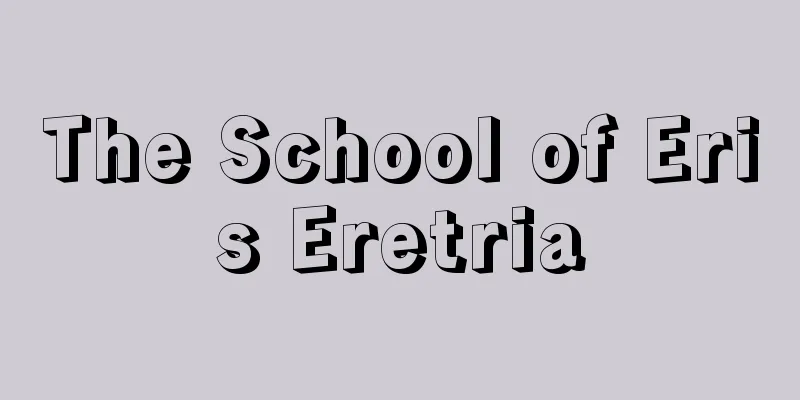Hanaoka Seishu

|
Year of death: Tenpo 6.10.2 (1835.11.21) Year of birth: October 23, 10th year of the Horeki era (November 30, 1760) A surgeon of Chinese and Dutch origin in the late Edo period. His given name was Shin, his real name was Unpei, his pen name was Hakuko, he was commonly known as Zuiken (3rd generation), and his family name was Shunrinken. He was born as the eldest son of a physician, Naomichi, from Hirayama, Kaminaga County, Kii Province (Wakayama Prefecture). He was initiated into medicine by his father, and in 1782 he went to Kyoto to study ancient medical internal medicine under Yoshimasu Nankai and Dutch surgery under Yamato Mitate. He broadened his knowledge by associating with various families in the capital, and after three years in the capital he returned home to take over the family business, studying clinical surgery by combining Chinese and Dutch. Influenced by the ancient medical school of the time, he promoted parental experimental studies, and with the motto of "exploring the principles of living things" to understand the principles of the living body and "unifying internal and external medicine" to achieve a medical realm that integrates internal medicine and surgery, he opened the private school Shunrinken and educated many medical students from all over the country. He developed the general anesthetic Tsusensan and introduced it into the field of surgery, performing operations that went beyond traditional surgery, and his academic style took the nation by storm. Tsusensan is a prescription containing Mandara-ge (Datura stramonium) that was used for hypnosis and pain relief, but it was not included in the anesthetics used by Japanese osteopaths for osteopathic purposes. Seishu developed it by further modifying a prescription that had been used by an internist based on his knowledge of Western medicine and consideration of Chinese books. It was introduced at the end of the period when classical anesthetics were used, and during the research his wife Kae, who was a subject, suffered an accident in which she lost her eyesight. However, he improved the efficacy and safety of the anesthetic, and developed an anesthetic suitable for use in surgery. On October 13, Bunka 1 (1804), he performed the first breast cancer removal under anesthesia in Japan. He went on to perform many breast cancer removals, and also applied it to open surgery for labia, tumors, gangrene, etc. He added his own ingenuity to the surgical tools, and they became popular as Hanaoka-style surgical tools. He also added his own innovations to Chinese-based prescriptions, creating Shiunko (an improvement on Angelica Junki Ko) and Jumihaidokuto (a modified version of Keibouhaidokusan), which are still in use today. At the request of the Kishu (Wakayama) domain, he entered service on the condition that he would work independently, and rose to the position of the domain's inner physician, splitting his time between working as a domain physician and practicing medicine independently. He died at his home in Hirayama and was buried in the Hanaoka family cemetery on the mountain behind the house. Many oral copies of his disciples' writings, such as "The Divine Book of Oncology" and "Chiiwaben," have been handed down. <References> Go Hidezo, "Dr. Hanaoka Seishu and His Surgery," Muneta Hajime, "Hanaoka Seishu's Development of Anesthetics" ("Research in the History of Practical Studies" IV) (Muneta Hajime) Source: Asahi Japanese Historical Biography: Asahi Shimbun Publications Inc. About Asahi Japanese Historical Biography |
|
没年:天保6.10.2(1835.11.21) 生年:宝暦10.10.23(1760.11.30) 江戸後期の漢蘭折衷外科医。名は震,俗名は雲平,字は伯行,通称は随賢(3代),家号は春林軒。紀伊国(和歌山県)上那賀郡平山の医家直道の長男として生まれる。父に医術の手ほどきを受け,天明2(1782)年京都に上って古医方の内科を吉益南涯に,オランダ流外科を大和見立 に学ぶ。洛中の諸家と交遊して見聞をひろめ,在洛3年ののち帰郷して家業を継ぎ,漢蘭を折衷して臨床外科を研究。当時の古医方派の影響を受けて親試実験を推し進め,生体の理を究める「活物窮理」と内科・外科を一体とする医学の境地を目指す「内外合一」をモットーとし,家塾春林軒を開いて全国から集まった多くの医生を育成した。全身麻酔薬通仙散を開発して外科領域に導入,旧来の外科を超える手術を敢行し,その学風は全国に風靡した。 通仙散は,催眠・鎮痛の目的で使われていたマンダラゲ(チョウセンアサガオ)配合の薬方で,日本の整骨医が使ってきた整骨用麻酔薬には配合されていなかった。青洲は内科医が洋方の知識をもとに中国書を勘案して用いていた薬方をさらに改変して開発した。その導入は古典的麻酔薬使用の最後の時期に位置し,研究過程で被検者となった妻の加恵が失明する事故に会ったが,薬効面と安全性を高めて外科手術に実用する麻酔薬に到達,文化1(1804)年10月13日,麻酔下での乳がん摘出術を日本で最初に実施するに至った。その後も多くの乳がん摘出術を遂行,また欠唇,腫瘍,脱疽などの観血手術にも応用した。手術用具にも創意を加えて華岡流外科具として普及した。さらに中国系薬方にも創意を加え,紫雲膏(当帰潤肌膏の改良),十味敗毒湯(荊防敗毒散の加減方)を製し,これらは現在も使用されている。紀州(和歌山)藩の懇請で勝手勤めの条件付きで出仕,同藩奥医師まで進み,生涯藩医と在野の医業生活を折半した。平山の自宅で没し,裏山の華岡家墓地に葬られた。『瘍科神書』『乳岩弁』など門人の録した多くの口授写本が伝わっている。<参考文献>呉秀三『華岡青洲先生及其外科』,宗田一「華岡青洲の麻酔薬開発」(『実学史研究』Ⅳ) (宗田一) 出典 朝日日本歴史人物事典:(株)朝日新聞出版朝日日本歴史人物事典について 情報 |
Recommend
Congo Red
〘Noun〙 (Congo red)⸨Congo red⸩ An azo dye synthesiz...
Homeless - Mushuku
They are also called homeless. In the Edo period,...
Meidner, L.
…Amid the conflict and exchange between the forme...
Ithuriel's-spear (English spelling)
...It produces bright purple flowers in June. Que...
Nuclear fission products (FP)
The term refers to the several types of atomic nuc...
Separation of isotopes
The process of separating and collecting isotopes ...
Round singing - Rinsho
A polyphonic song in which other voices sing the ...
Lubrication - Junkatsu
When two solid objects slide against each other w...
Aso National Park
…In the narrow sense, it is often used to refer t...
Mañara, M.de (English spelling) ManaraMde
…He mainly worked on religious paintings in oils,...
Cinema art
〘 noun 〙 The art expressed through film. A word us...
Agathis australis (English spelling) Agathisaustralis
… [Mitsuru Hotta]... *Some of the terminology tha...
Unima - Unima (English spelling) UNIMA
Abbreviation for Union Internationale de la Mario...
Shinsai Igarashi
Years of birth: unknown. A lacquer artist from the...
Political corruption
Political corruption is created when public power...









